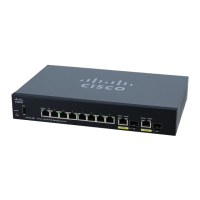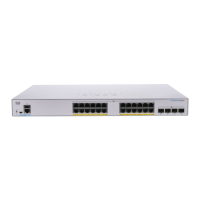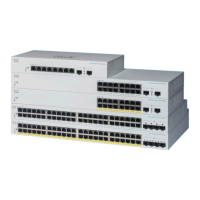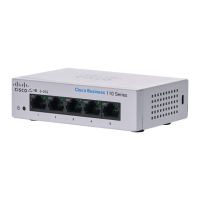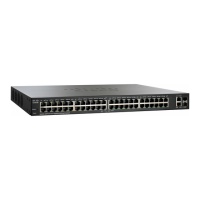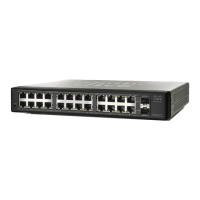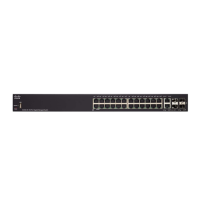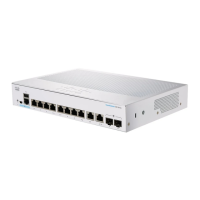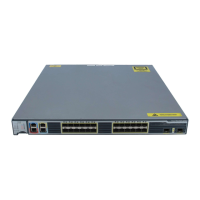●
●
●
Step 3
To enter the context of the specified stack unit or all stack units, enter the stack unit command in
the Global Configuration mode by entering the following:
Step 4
Enter the stack configuration command to configure the stack ports and unit ID after reboot by
entering the following:
The options are:
ports-list - a list of one or more stack ports separated by comma, or a range of sequential
ports marked by dash.
Links - Choose port list to be used as stack links after reload.
unit-id - Choose the unit ID to be used after reload. The range is 1 to 4. You can use auto to
enable stack auto numbering feature.
Step 5 (Optional)
To remove stack configuration settings on the switch, use the no stack configuration command by
entering the following:
Step 6
Enter the end command to go back to the Privileged EXEC mode of the switch.
Step 7 (Optional)
To display the stack configuration settings, enter the following:
Step 8 (Optional)
In the Privileged EXEC mode of the switch, save the configured settings to the startup
configuration file, by entering the following:
CBS350-2#configure
CBS350-2(config)#stack unit [unit-id | all]
In this example, stack unit 1 is used.
CBS350-2(unit)#stack configuration {[links ports-list] [unit-id | auto]}
CBS350-2(unit)#no stack configuration
CBS350-2(unit)#end
CBS350-2#show stack configuration
In this example, the Unit 2 switch now uses te3-4 as stack links. These settings will take effect
after the switch reboots.
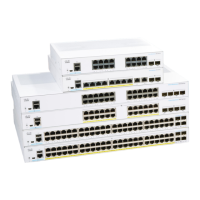
